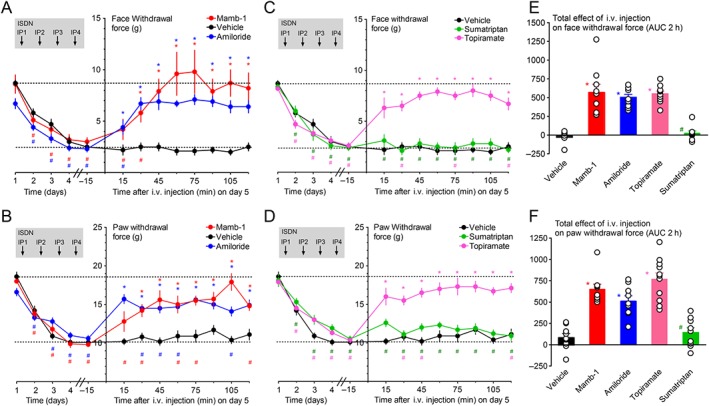Figure 4.

Reversal of ISDN‐induced maximal cephalic and extra‐cephalic chronic mechanical allodynia by an i.v. injection of mambalgin‐1. (A–D) Kinetics of the anti‐allodynic effect of Mamb‐1 (11.3 nmol·kg−1), amiloride (10 mg·kg−1), sumatriptan succinate (Imiject, 10 mg·kg−1) and topiramate (30 mg·kg−1), i.v. injected 1 day after the last ISDN injection (i.e. on day 5) on face (A, C) and paw (B, D) mechanical withdrawal force (g) in rats. The basal mechanical withdrawal force (g) was measured before each daily ISDN injection (left side of the y axis), showing the chronification process of cutaneous allodynia day after day. For clarity, kinetics were split into two graphs, sharing the same data for vehicle. Mean ± SEM, n = 9 except with topiramate (n = 11). *P < 0.05 with Mann–Whitney non‐parametric test compared to vehicle; # P < 0.05 with Wilcoxon matched paired test compared to control value before the first ISDN injection (day 1), not shown, but all significant for vehicle. (E, F) Total effect on face (E) and paw (F) withdrawal force calculated as the AUC during the 2 h after the i.v. injection for each rat. Individual data points and mean ± SEM n = 9: *P < 0.05 with Mann–Whitney non‐parametric test compared to vehicle; # P < 0.05 with Mann–Whitney non‐parametric test compared to Mamb‐1.
